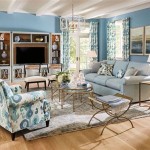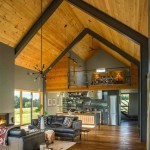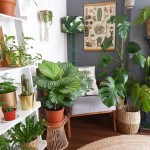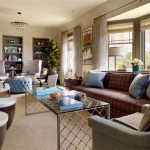How To Decorate Your Room With Bunk Beds
Bunk beds are a practical and space-saving solution for smaller bedrooms or shared living spaces. Beyond their functional purpose, bunk beds offer a unique opportunity to create a visually appealing and personalized room design. Effective decoration can transform a simple bunk bed setup into a stylish and comfortable haven, enhancing the overall ambiance of the room.
The process of decorating a room with bunk beds requires careful consideration of several factors, including the room's size, the occupants' ages and preferences, and the desired aesthetic. A well-planned approach ensures that the bunk beds integrate seamlessly into the room's design, maximizing space and creating a visually harmonious environment.
Planning the Layout and Spatial Arrangement
Before commencing the decoration process, it is crucial to carefully plan the layout of the room. Begin by measuring the room's dimensions and sketching a floor plan. This will allow for visualizing different furniture arrangements and determining the optimal placement of the bunk beds. Consider factors such as window and door placement, as well as available wall space, when determining the bunk bed's location.
The position of the bunk beds significantly impacts the flow of the room. Avoid placing them in a location that obstructs doorways or walkways. Ideally, position the bunk beds against a wall to maximize floor space and create a sense of openness. In smaller rooms, consider placing the bunk beds in a corner to further optimize space utilization.
After deciding on the bunk bed's placement, consider the placement of other essential furniture pieces, such as desks, dressers, and seating areas. Ensure that there is adequate space for movement and that each piece of furniture complements the overall design. Maintaining a balanced and uncluttered layout is essential for creating a comfortable and functional room.
Consider the vertical space available. Bunk beds necessitate considering headroom for both bunks. Low ceilings may require specific bunk bed designs to ensure comfortable use of the top bunk. Evaluate whether built-in storage solutions, such as drawers or shelving integrated into the bunk bed frame, are feasible and desirable for optimizing space.
Selecting a Color Palette and Theme
The color palette establishes the mood and atmosphere of the room. When decorating a room with bunk beds, choose a color scheme that is both aesthetically pleasing and conducive to relaxation and sleep. Neutral colors, such as beige, gray, and off-white, are versatile and create a calming backdrop. These colors can be complemented with pops of color through bedding, accessories, and wall decor.
Consider the preferences of the occupants when selecting a color palette. When dealing with shared rooms, aim for a compromise that incorporates elements of both individuals' tastes. Gender-neutral colors and themes are often a safe and harmonious option for shared spaces. The use of accent colors through textiles and decorations offers personalization without overwhelming the overall design.
While a cohesive color palette is important, introducing textures and patterns can add depth and visual interest to the room. Consider incorporating textured bedding, patterned rugs, and textured wall coverings to create a more dynamic and engaging space. Avoid overusing patterns, as this can make the room feel cluttered and overwhelming.
Choosing a theme provides a framework for the overall design. Popular themes for rooms with bunk beds include nautical, nature-inspired, and minimalist themes. Select a theme that aligns with the occupants' interests and complements the room's architecture. A well-executed theme can transform a simple bedroom into a personalized and engaging space that reflects the occupants' personalities.
Utilizing Bedding, Textiles, and Accessories
Bedding plays a crucial role in the overall aesthetic of the bunk beds. Select bedding that complements the color palette and theme of the room. Consider the material and texture of the bedding to ensure comfort and durability. High-quality bedding can significantly enhance the sleeping experience and contribute to the room's overall ambiance.
Textiles, such as curtains, rugs, and throw pillows, add warmth and texture to the room. Choose textiles that complement the bedding and the overall color scheme. Consider the functionality of each textile item. Blackout curtains can block out light and improve sleep quality, while soft rugs can add comfort and warmth to the floor.
Accessories, such as artwork, lamps, and decorative objects, provide opportunities to personalize the room and add visual interest. Choose accessories that reflect the occupants' interests and hobbies. Consider the scale and placement of each accessory to ensure that it complements the overall design. Avoid over-accessorizing, as this can make the room feel cluttered and overwhelming.
Personalized touches are essential for creating a comfortable and inviting space. Consider incorporating framed photos, artwork created by the occupants, and meaningful mementos. These personal touches can transform a generic bedroom into a unique and cherished space.
Implementing Storage Solutions
Bunk beds often occupy a significant portion of the room, making efficient storage solutions paramount. Maximize storage by utilizing under-bed storage containers, built-in drawers, and shelving units. These solutions provide space for storing clothes, toys, and other items, helping to keep the room organized and clutter-free.
Consider vertical storage solutions, such as wall-mounted shelves and hanging organizers. These solutions utilize vertical space that might otherwise go unused, providing additional storage without taking up valuable floor space. Wall-mounted shelves are ideal for displaying books, artwork, and other decorative items.
Multi-functional furniture provides additional storage options. Ottomans with built-in storage and desk units with drawers and cabinets can help to maximize space utilization. Consider investing in furniture that serves multiple purposes to optimize storage and functionality.
Organizing the storage spaces helps to maintain a clutter-free environment. Utilize storage bins, baskets, and dividers to organize items within drawers and shelves. Labeling storage containers can further enhance organization and make it easier to find items quickly.
Incorporating Lighting Fixtures
Adequate lighting is essential for creating a comfortable and functional bedroom. Incorporate a combination of ambient, task, and accent lighting to create a balanced and well-lit space. Ambient lighting provides general illumination, while task lighting provides focused light for specific activities, such as reading or studying. Accent lighting highlights specific features of the room, such as artwork or architectural details.
Consider the placement of light fixtures to ensure adequate illumination throughout the room. Ceiling lights or recessed lighting can provide ambient lighting, while desk lamps and bedside lamps can provide task lighting. Accent lighting can be achieved through the use of wall sconces, track lighting, or spotlights.
Adjustable lighting fixtures provide flexibility and control over the amount and direction of light. Dimmable switches allow for adjusting the brightness of the lights, creating a more relaxing atmosphere. Adjustable lamps can be positioned to direct light where it is needed most.
Novelty lighting, such as string lights or decorative lamps, can add a touch of whimsy and personality to the room. These lighting options can be used to create a cozy and inviting atmosphere. However, it is important to use novelty lighting sparingly to avoid overwhelming the room.
Ensuring Safety and Functionality
Safety is paramount when decorating a room with bunk beds. Ensure that the bunk beds meet all safety standards and regulations. Check that the guardrails are securely attached and that the ladder is stable and easy to climb.
Consider the age and abilities of the occupants when selecting and positioning the bunk beds. Younger children should sleep on the lower bunk to minimize the risk of falls. Ensure that there is adequate space for climbing and descending the ladder without obstruction.
Regularly inspect the bunk beds for any signs of wear and tear. Tighten loose screws and bolts, and repair any damaged components. Maintaining the bunk beds in good condition is essential for ensuring their safety and longevity.
Functionality should also be a priority. Ensure that the bunk beds are positioned in a way that allows for easy access and movement. Consider the placement of electrical outlets and light switches to ensure that they are conveniently located.

Innovative Bunk Bed Design Ideas For Your Home Designcafe

25 Space Saving Bunk Bed Ideas Stylish Beds For S And Kids

Top 10 Bunk Beds Decorating Ideas

Bunk Bed With Desk Ideas For Boys And Girls Designcafe

Houzz Home Design Decorating And Remodeling Ideas Inspiration Kitchen Bathroom Chambre Enfant Lits Superposés Modernes Idée
These Cool Bunk Bed Ideas Are Guaranteed To Save Space In Your Room

Amazing Bunk Beds We Wish Had Architectural Digest

18 Shared Girl Bedroom Decorating Ideas Make It Love Bunk Bed Designs Girls Beds

Inspired By Bunk Beds For A Guest Room The

Custom Kids Beds Build Your Perfect Bunk Bed Or Loft Maxtrix







